Understanding Induction PCB Board Prices: A Comprehensive Guide
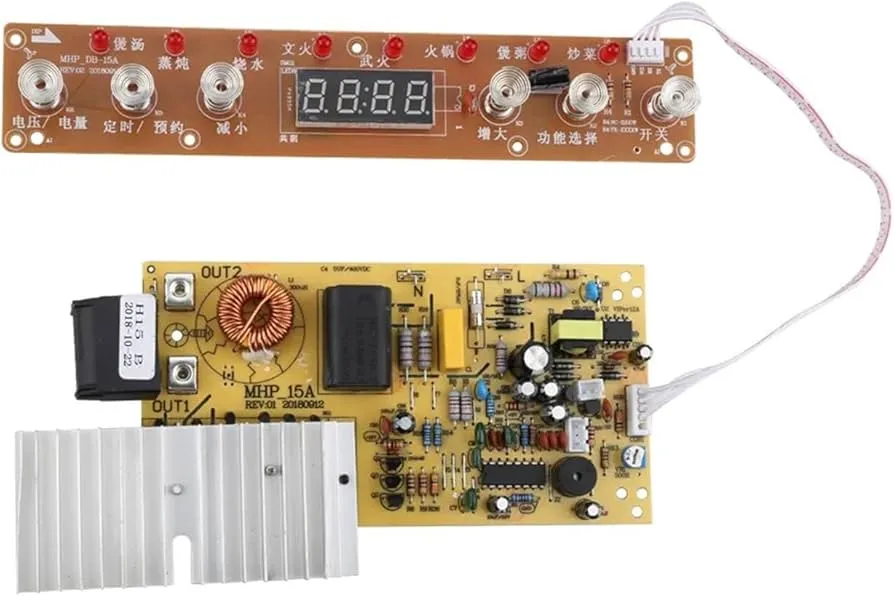
Induction cooktops have revolutionized the way we cook, offering efficiency and precision. At the heart of these devices lies the induction PCB board, a critical component that manages the heating process. Understanding the price of induction PCB boards is essential for anyone considering repairs, replacements, or even manufacturing. In this article, we'll delve into the factors influencing [induction pcb board price], comparing costs, and exploring the different options available for this vital part.
Factors Affecting Induction PCB Board Prices

The price of an induction PCB board is determined by a combination of factors, primarily the complexity of the board's design, the quality of its components, the board's power rating, and the manufacturer's pricing strategy. These factors collectively influence the overall cost, with more complex designs and higher power handling capabilities generally resulting in a higher price point.
- Design Complexity
More complex designs with multiple layers and intricate circuitry require more advanced manufacturing processes and higher-quality materials, which increase costs. - Component Quality
High-quality, durable components such as capacitors, inductors, and microcontrollers are more expensive but contribute to better performance and a longer lifespan of the induction cooker. - Power Rating
PCB boards designed for higher power induction cookers need to handle greater electrical loads, requiring more robust components and sophisticated circuitry, leading to higher prices. - Manufacturer
Different manufacturers have varying cost structures, production capabilities, and brand reputations, all of which affect pricing.
Component Costs and Their Impact
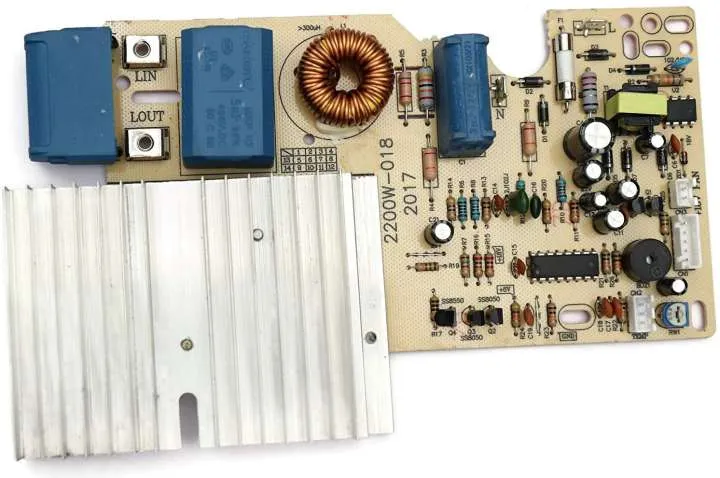
The overall cost of an induction PCB board is significantly influenced by the price of its constituent components. High-quality components, while more expensive upfront, are crucial for ensuring the long-term reliability and optimal performance of the induction cooker.
| Component Type | Cost Impact | Function | Quality Impact |
|---|---|---|---|
| Capacitors | Moderate to High | Energy storage and filtering | Higher quality capacitors lead to better stability and a longer lifespan of the board. |
| Inductors | Moderate | Magnetic field generation for induction | Higher quality inductors enhance energy efficiency and reduce heat generation. |
| Microcontrollers | Moderate to High | Control and monitoring of the induction process | Advanced microcontrollers provide more efficient and precise control, enhancing the performance and reliability. |
| IGBTs (Insulated Gate Bipolar Transistors) | High | Power switching | High-quality IGBTs improve power handling and reduce switching losses which increases efficiency and reduces heat generation. |
| Diodes | Low to Moderate | Current rectification and protection | High-quality diodes provide better protection against voltage spikes and prevent premature failure. |
| Resistors | Low | Current limiting | Precision resistors ensure accurate circuit parameters. |
The use of durable, high-grade components, even at a higher initial cost, often translates into fewer failures, reduced repair expenses, and extended operational life for the induction cooker. Conversely, using cheaper components can lead to a higher failure rate and the potential need for frequent replacements, negating any initial cost savings.
Power Rating and Price Variations
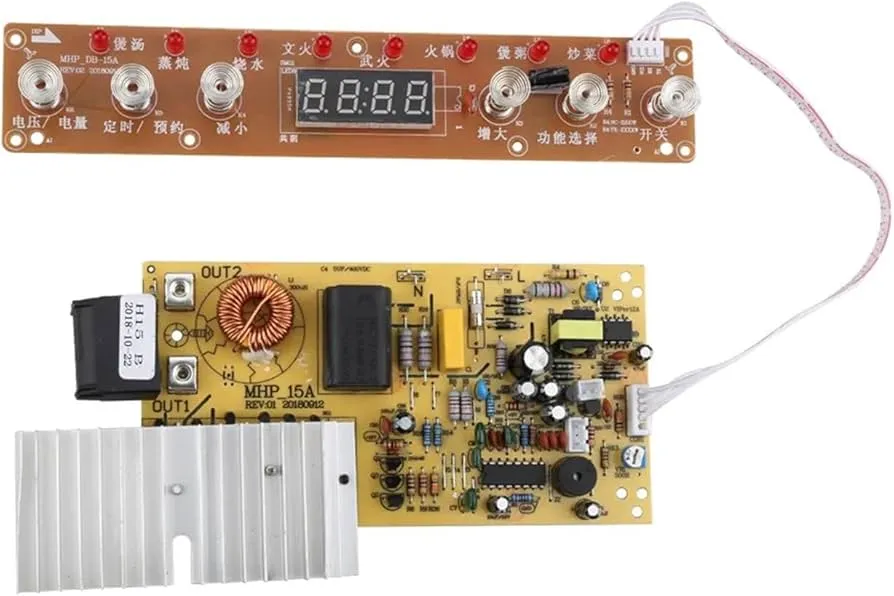
The power rating of an induction cooker significantly influences the complexity and cost of its PCB board. Higher power cookers demand more robust boards capable of handling greater electrical loads, necessitating more sophisticated circuitry and higher-grade materials, which directly translate to increased prices.
| Power Rating (Watts) | Typical PCB Board Complexity | Approximate Price Range (USD) | Application |
|---|---|---|---|
| 1000-1500 | Basic circuitry, single-layer or double-layer PCB | $10 - $25 | Portable or low-power cookers |
| 2000-2500 | Moderate complexity, multi-layer PCB, enhanced heat dissipation | $25 - $50 | Standard domestic cookers |
| 3000-3500 | High complexity, advanced component selection, optimized thermal management | $50 - $80 | Commercial or high-performance domestic cookers |
| 4000+ | Very high complexity, specialized PCB design, custom heat sink | $80+ | Heavy-duty commercial or industrial cookers |
Understanding Repair vs. Replacement Costs
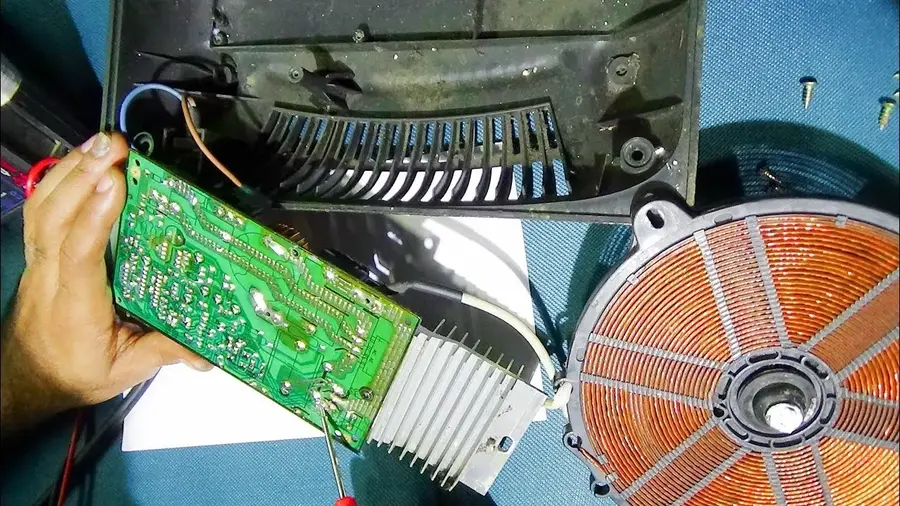
The decision to repair or replace an induction PCB board hinges on the severity of the damage and the availability of replacement components. Minor issues may be rectified through repair, presenting a more economical short-term option. However, significant damage, such as that resulting from water intrusion, often necessitates a full board replacement to preempt future complications and ensure reliable operation.
- Repair Considerations
Repair is suitable for minor component failures, such as a single capacitor or resistor. Cost-effectiveness is high for localized issues. - Replacement Considerations
Replacement becomes necessary with extensive damage or where multiple components are affected, such as after water damage or a significant electrical short. It is more economical than repeated repairs of complex issues. - Cost Comparison
A simple component replacement may cost significantly less than a new board. However, recurring issues or the potential for future damage make replacement a more reasonable choice for extensive damage, especially considering the long-term performance benefits.
Common Induction PCB Board Issues and Their Cost
Understanding the common problems that affect induction PCB boards is essential for both troubleshooting and cost management. These issues range from component failures to physical damage, each having its own implications for repair or replacement costs. Accurate diagnosis is crucial to making informed decisions about repair versus replacement.
- Component Failure
Capacitors, inductors, and microcontrollers are susceptible to failure due to age, heat, or electrical stress. The cost for replacement varies widely depending on the component and the difficulty of replacement. - Burnt Traces
Overcurrent or short circuits can lead to PCB traces being burnt. Repairing burnt traces might be possible in some cases, but severe damage will likely require a replacement board. - Water Damage
Spilled liquids are a common cause of board short-circuits and corrosion. Depending on the extent of the damage, the board might need a thorough cleaning, component replacement, or complete replacement. - Overheating
Insufficient ventilation, prolonged use at high power settings, or component aging can result in overheating. Overheating can cause capacitor failure, solder joint failure, or even delamination of the board. - Solder Joint Failure
Repeated heating and cooling cycles can cause solder joints to become weak or cracked. This issue can often lead to intermittent operation or total failure. Repair may be possible if the damage is localized.
It's crucial to note that the cost of repair or replacement can be significantly impacted by the complexity of the board, the type of components that have failed, and the labor cost involved in the diagnosis and repair process. Preventative measures as outlined in subsequent sections can minimize the incidence of these issues.
Where to Buy Induction PCB Boards: A Price Comparison
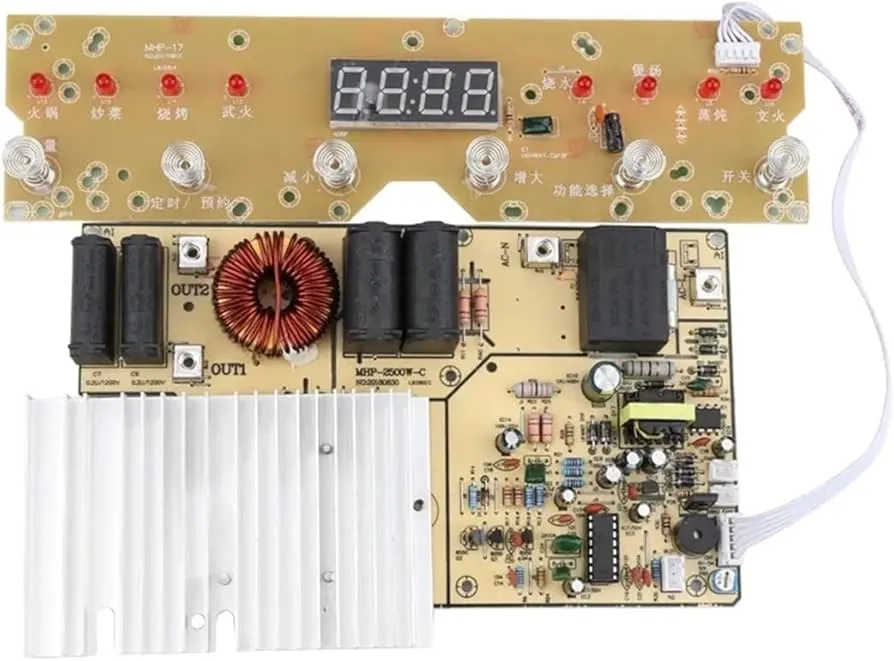
The procurement of induction PCB boards involves navigating a diverse marketplace with varying price points and quality assurances. Options range from large online marketplaces to specialized electronics suppliers, each offering unique advantages and disadvantages. A thorough comparison is crucial to securing the best value for your specific needs, considering factors beyond just the initial purchase price.
| Supplier | Price Range | Pros | Cons |
|---|---|---|---|
| Alibaba | $0.5 - $38 | Wide selection, potential bulk discounts | Variable quality, higher minimum order quantities |
| Amazon | $35 and up | Individual sales, relatively reliable, faster shipping for most customers | Can be pricier compared to direct imports |
| AliExpress | $9 and up | Affordable, wide range of options, suitable for low quantity orders | Variable quality, longer shipping times |
| Specific Suppliers | Varies | Higher quality and can meet specific specifications | Higher costs, may not cater to individual sales, longer lead times |
Induction PCB Board Frequently Asked Questions
This section addresses common queries regarding induction PCB boards, providing insights into typical issues, troubleshooting, and lifespan considerations. Understanding these aspects is crucial for maintaining and optimizing the performance of your induction cooker.
- What are the common causes of induction PCB board failure?
Common causes include component failure due to overheating, burnt traces from power surges, water damage from spills, and general wear and tear over time. These issues can lead to a range of malfunctions, from complete failure to intermittent performance. - What are the typical signs of a damaged induction PCB board?
Signs of damage include the induction cooker not turning on, erratic behavior such as intermittent heating, error codes displayed on the control panel, unusual noises like buzzing or clicking, and visible signs of damage like burnt components or discolored areas on the board. - How can I troubleshoot a non-functioning induction cooker?
Start by checking the power supply and ensuring the cooker is plugged in correctly. Inspect the control panel for any error codes. If possible, visually inspect the PCB for any obvious damage. If these basic checks don't resolve the issue, it may indicate a deeper problem requiring professional diagnosis and repair. - Is it possible to repair a damaged induction PCB board, or is replacement always necessary?
Minor issues like a faulty capacitor or a loose connection can often be repaired by a qualified technician. However, if the damage is extensive, such as severe burns or water damage impacting multiple layers of the board, replacement is typically the most cost-effective and reliable long-term solution to avoid future problems. - What is the average lifespan of an induction cooker PCB board?
The lifespan of an induction cooker PCB board varies depending on usage frequency, environmental conditions, and the quality of components. Generally, a well-maintained board can last for many years, often exceeding the lifespan of the appliance, while heavy or improper usage may shorten its life. Regular preventative measures will increase the life span. - Can using the wrong voltage or power rating damage the induction PCB board?
Yes, using the incorrect voltage or exceeding the specified power rating can cause severe damage to the PCB board. This is a frequent cause of overheating and component failure which may result in permanent damage and a costly repair or replacement. It is crucial to use the correct power and voltage parameters as specified by the manufacturer. - Are there preventative measures to take to increase the life of an induction PCB board?
Yes, preventative measures such as avoiding liquid spills, ensuring the air vents are not blocked for effective cooling, and not overloading the induction cooktop beyond its specification, are important. Additionally, regularly inspecting for any unusual signs and addressing them early can further enhance the longevity of the PCB board and the induction cooker in general.
Choosing the Right PCB Board: Compatibility and Specifications
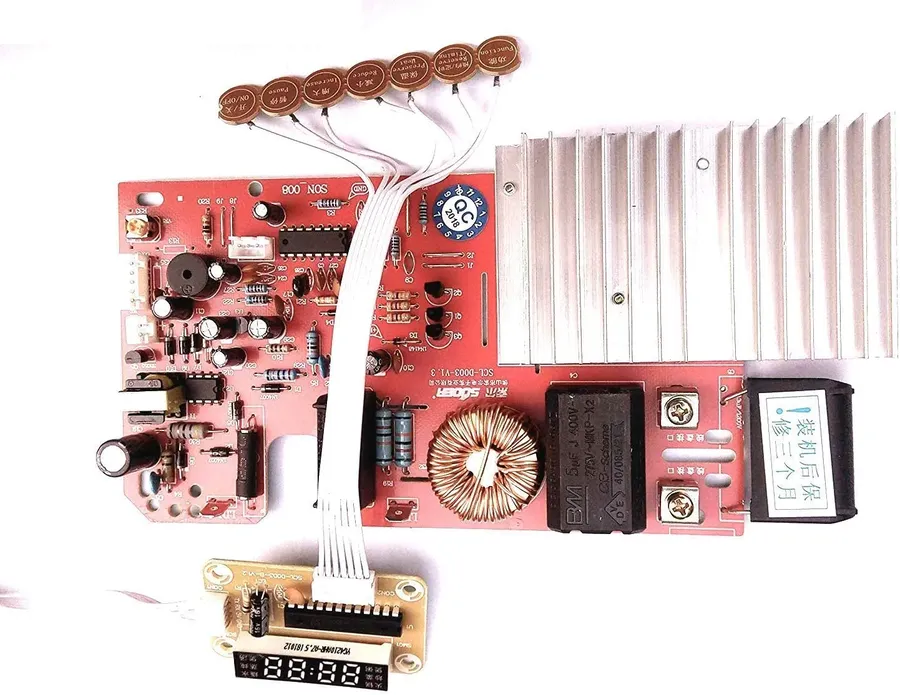
Selecting the correct induction PCB board requires meticulous attention to compatibility and specifications to ensure safe and effective operation of your induction cooker. The replacement board must precisely match the original's electrical characteristics and physical dimensions; mismatches can lead to performance issues, safety hazards, and potentially irreparable damage to the cooker. Prioritize verifying the voltage, power rating, and control interface are consistent with your cooker model.
- Voltage Compatibility
The replacement PCB board must be designed for the same voltage as your induction cooker. Using a board with an incorrect voltage rating can lead to immediate failure or long-term damage. - Power Rating Matching
Ensure the power rating (measured in Watts) of the replacement PCB board matches or exceeds that of the original. An under-rated board will likely fail under the normal operating conditions of your cooker. An over-rated board can be used if the voltage is a match but may be unnecessary. - Control Interface Alignment
The connection interface on the PCB board (including connectors for the control panel, power supply, and heating elements) must align with your cooker's connections. Incompatible connectors will not allow your cooker to function. - Physical Dimensions
The PCB board's size and mounting hole positions should match the original board's dimensions to ensure it can be physically installed correctly in your cooker's casing. - Consult the Cooker Manual
The most accurate source for specific PCB board specifications is the manufacturer's manual for your induction cooker model. This document should detail the exact replacement part required and its specifications. - Seek Professional Help
If you're unsure about which PCB board is the correct replacement, consult with a qualified appliance repair technician. They will be able to verify compatibility, assist in the repair process, and ensure the safe and correct operation of your cooker.
Preventative Measures to Extend PCB Board Life
Extending the lifespan of an induction cooker's PCB board hinges on proactive maintenance and careful usage. Simple yet effective preventative measures can significantly reduce the risk of premature failure, saving both repair costs and downtime.
- Avoid Liquid Spills
Prevent liquids from entering the induction cooker, especially near vents or seams. Spills can cause short circuits and corrosion which will damage the PCB. - Proper Ventilation
Ensure air vents on the cooker are not obstructed. Overheating from blocked vents is a common cause of PCB component failure, particularly capacitors. - Use Appropriate Voltage and Power
Always operate the induction cooker within its specified voltage and power ratings to prevent electrical overstress. Check the cookers user manual for these specifications. - Avoid Overloading
Refrain from using cookware that exceeds the specified weight limit or placing multiple heavy items on the cooktop simultaneously. This prevents unnecessary stress on the PCB and its components. - Limit Continuous Use
Do not leave induction cooktops on for extended periods of time. Extended use can lead to higher temperatures, and accelerate wear and tear of PCB components. - Regular Inspections
Conduct regular visual inspections of the induction cooker for signs of damage, loose connections, or burn marks. Early detection can prevent minor issues from becoming major problems.
Understanding the factors that impact the [induction pcb board price] is crucial for informed decisions. Whether you are looking to repair, replace, or understand the cost implications of this vital component, this guide provides key insights. By considering factors like component quality, power ratings, and source of purchase, you can navigate the world of induction PCB boards with confidence, ensuring optimal performance for your induction cooktop. The lifespan of a PCB board can be extended with preventative measures and regular maintenance, therefore it's important to consider the right precautions.
 AnyPCBA
AnyPCBA